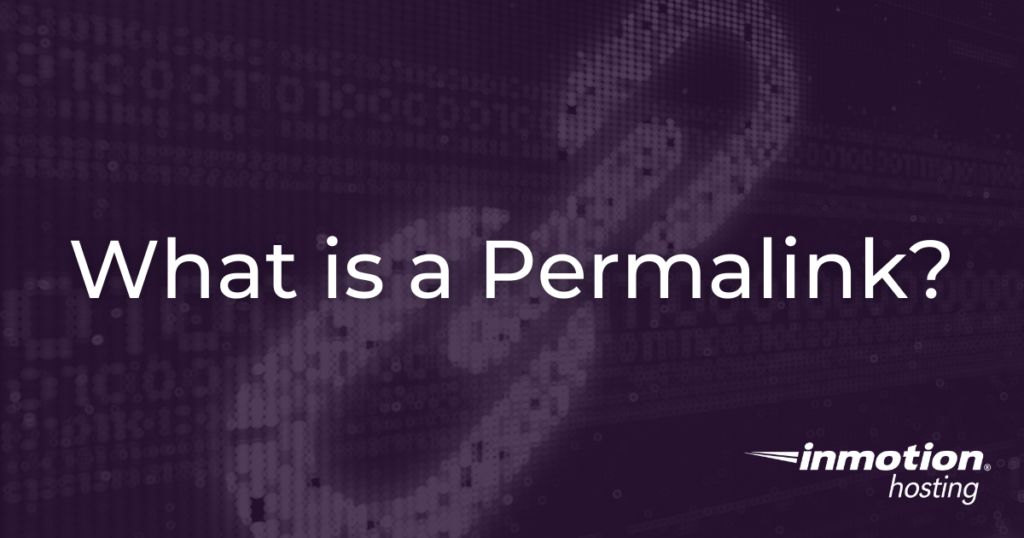
A permalink is the full web address (URL) for a webpage. It has earned that name because it is a permanent link and is not expected to change as long as that web page is published on the internet.
They also give you an opportunity to tell readers and search engines what your web site or page is all about.
Permalinks can be as long as 2083 characters, but for SEO purposes, the shorter they are, the better.
They are split into two parts – the website domain and the slug.
What is a WordPress Slug?
When researching permalinks, you’ll often see people talk about creating a good slug for a page.
Slug and permalink are often closely associated because a slug is actually part of your permalink.
A slug is the part of the URL that pinpoints an specific page on a website in a simple and easy to read format. It always follows domain slash (/).
In a URL, it is the part that defines that page’s content.
Using this article as an example, the URL is “https://www.inmotionhosting.com/blog” and the slug is “what-is-permalink.”
Permalink Best Practices
Just like the content of your website, permalinks should be optimized for SEO.
They should be short and descriptive and contain the only necessary information that describes exactly what the web post or page is about.
It is best to use the same SEO keywords for them as you used for the title of a web page. Doing this gives search engines a good idea about what the content of the page covers. This also improves your chances of ranking higher in search results for those keywords.
They should also begin with “https.” This shows that the page is secure and that any info sent between the web server and browser is encrypted.
All permalinks should be lowercase, as some web servers handle uppercase letters differently. Every word within one should be separated by dashes (-).
When working on your SEO-friendly URL, avoid wasting valuable space with stop words that don’t add any value (“of”, “on”, “the”, “and”, etc.).
Similarly, don’t worry about punctuation. Commas, periods, quotes, etc. are invalid URL characters and will be removed automatically.
While it is best for permalinks to remain the same, it is possible to change them if needed. If you decide to change a permalink though, it is essential to set up a 301 redirect.
By setting up a 301 redirect, both users and search engines will be sent to a different URL than they requested. This allows users to click on an outdated link and land on the page you want them to see. It also helps avoid broken links and 404 errors.
Permalinks and WordPress
WordPress is the world’s most popular CMS for many reasons. Chief among those reasons is innovation.
It was the first platform to use the term “permalink,”and simplified the ability to customize URL structure for your entire website.
You can adjust your link settings on WordPress. Simply click on the Settings tab, then click Permalinks.
WordPress gives users several options when determining your permalink structure. The most popular option for most users is “Post Name.”
“Post Name” cuts down on the fat of a permalink, eliminating any unnecessary information. With this selection, WordPress will use whatever text you type in for the page title and separate it with dashes.
If for some reason you structured your links before doing enough research and wish you could start over, you can. It is possible to reset your WordPress permalinks.
Launch your website quickly and easily with one of our WordPress Hosting plans!